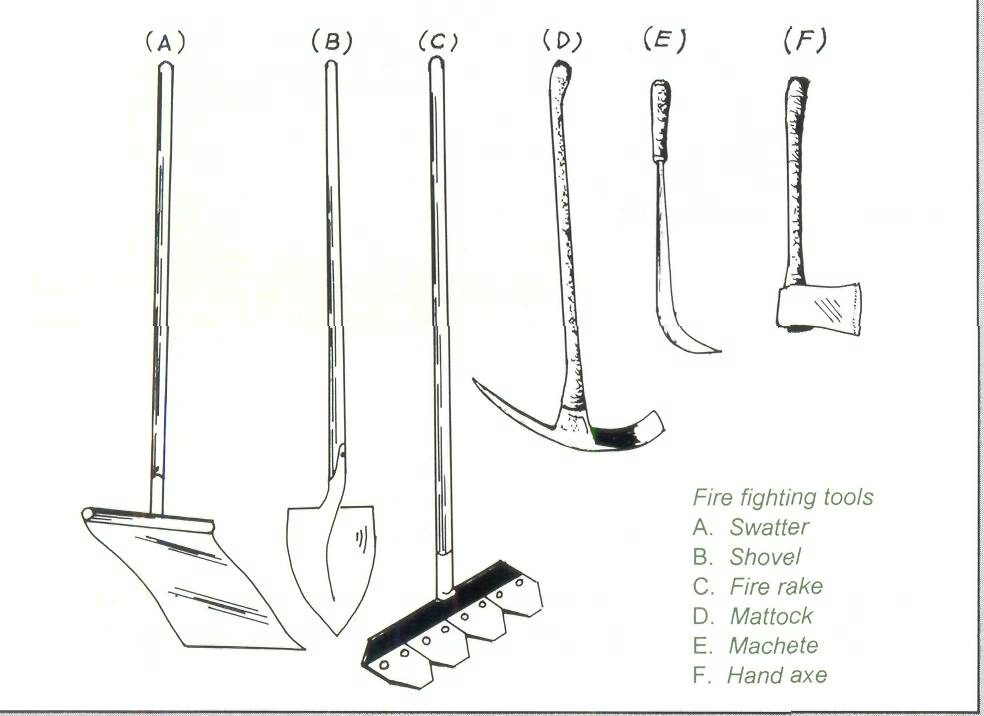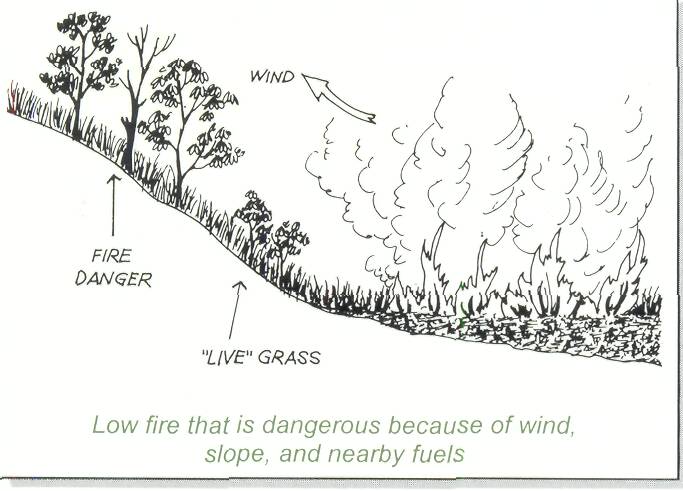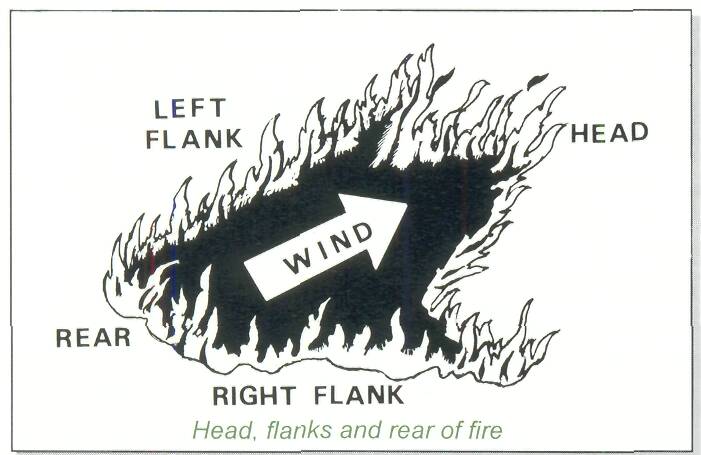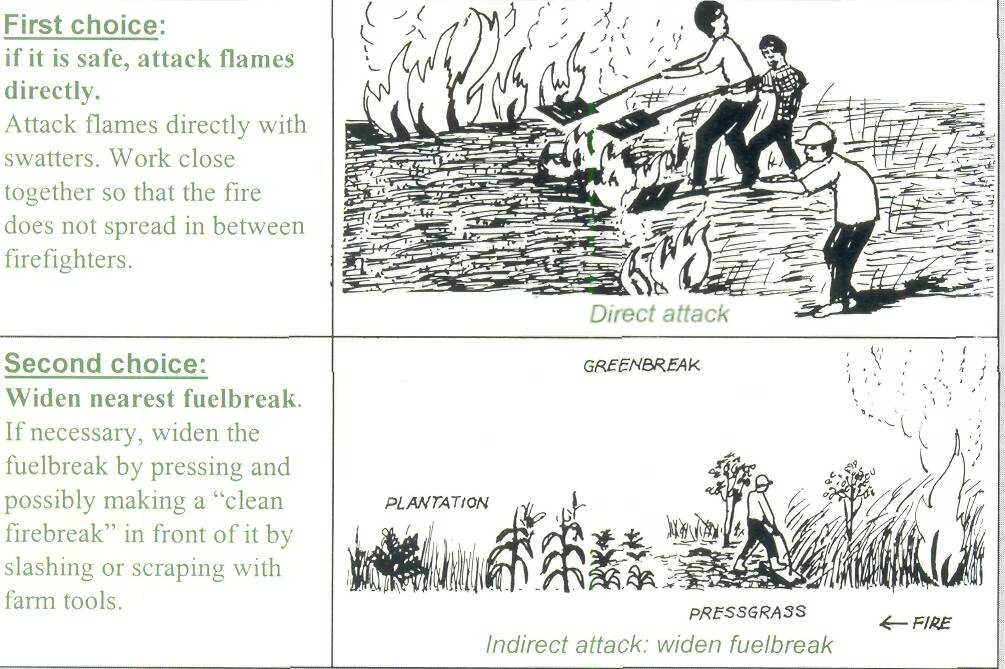|
Fire suppression is dangerous and difficult even with good training
and equipment. The following principles are especially important in
remote areas:
-
Put "safety first!" If it's not safe, don't do it.
-
Concentrate on fire prevention and pre-suppression. The suppression
techniques in this manual are appropriate in pressed grass and near fuelbreaks, not in tall grass.
-
Train a community fire brigade in fire suppression. Techniques like
backfiring are not covered in this manual because they are not safe
without more comprehensive training. Local government agencies may be
able to provide such training; see Appendix A for fire protection
manuals.
The fire brigade must determine ahead of time who will be the leader
each time people gather to fight fires: the first capable person to
arrive, the landowner, or the most experienced firefighter in the
village. This leader must then make decisions about safety and how the
group will fight the fire in a coordinated way.
Affordable equipment for fighting grass fires in isolated areas
includes farm tools to make clean fire breaks, a gong or other alarm to
call for help, and swatters to put out flames. Swatters can be made from
truck mud flaps, or from burlap sacks that are soaked in water. Lookout
towers can be built with local materials. Firefighters should wear
cotton clothes (polyester may melt on the skin) and boots if possible.
Firefighters should have containers for drinking water.

Before approaching a fire, judge how dangerous it is. Flames more
than 2 m tall are not safe to fight directly. Even if the flames are
low, it is not safe to fight a fire directly if it is likely to suddenly
flare up. Try to predict its future behavior by considering:
-
the time of day. Fires usually become more active as the
day gets hotter.
-
the wind. Fires spread with the wind, and become more
active as wind increases.
-
nearby fuel. The flames will be twice as tall as the
fuel they are burning. A fire may spread into tall fuel and suddenly
get bigger.
-
steep slopes nearby. Fires tend to spread uphill
quickly.

Always make sure that there is a safe "escape route" by which the
firefighters can run to a safe area. Don't go into the middle of tall
grass.

For small, controllable fires, attack the "head" (front) first, then
work back down the "Hanks" (sides), then the rear. If it is not safe or
not practical to attack the head, concentrate on protecting high value
areas on the flanks or rear.
Watch out for the head or flanks spreading back toward the
firefighters.
To attack the head, flanks or rear:

|



